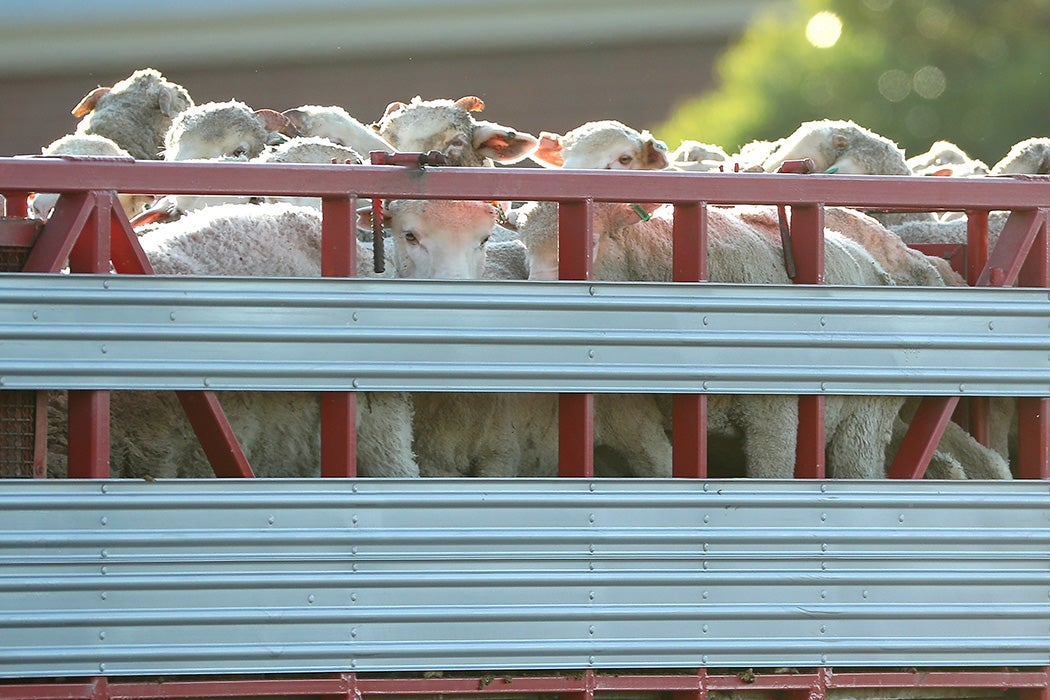Australia is one of the world’s largest live animal exporters. The industry is contentious not least because it means thousands of sheep and cattle are forced to travel thousands of miles by ship only to be slaughtered at the other end, what many see as an unnecessary trial when they could be processed for meat domestically. But there’s a global market for live animals and suppliers to meet it. Recent years have seen increased scrutiny on the industry, and in January 2024, there came the tragic story of sheep trapped on a ship that couldn’t land due to conflict in the Middle East.
Moral philosopher and veterinarian Simon Coghlan discusses the broader ethical question of live animal export and how it can be rationalized, looking at the issue through a variety of ethical frameworks. Ultimately, he concludes that the practice “cannot be justified by those substantial moral frameworks which grant…that nonhuman animals have some noninstrumental moral value.” That is, the application of utilitarian theory, virtue theory, or animal rights theory to the practice can lead only to “a strong moral condemnation of live animal export.”
Meanwhile, historian Nancy Cushing takes a longer view, pointing out that live animal transport has been a part of Australia’s history from its earliest days, when the British colony was established as New South Wales in 1788. As she notes, “In contrast with the vocal opposition to live export since 1970, trade in live animals was seen in the nineteenth century as a necessary and unremarkable aspect of colonisation.”
Animals were brought by ship by the first colonists and then traded among other colonies—and other markets in the Pacific.
“Live animal imports were a necessary stage in the setting up of a new colony,” she writes. Given the distance from Britain, however, it was difficult to bring livestock in large numbers. Thus, animals were more commonly imported from South Africa and India, and later Australia became an exporter of animals to the same regions.
Indeed, Australia’s live animal export industry was underway within decades of the colony’s founding.
“The Returns of the Colony of NSW record live animal export from 1829 showing that it was led in quantity by sheep,” Cushing writes. The remainder of the list represented “cattle and horses with small numbers of pigs, dogs, goats and birds and occasional oddities like deer, llamas, lions and tigers.”
New South Wales became a supplier of horses to India from the 1830s, and sheep exports would eventually become more significant, peaking at 77,000 in 1843.
Weekly Newsletter
The technology—and cultural attitudes—of the time meant some of these animals suffered horrendously. As Cushing relates,
When a ship carrying horses from Melbourne to Dunedin in New Zealand was struck by a gale in the 1860s, sixty terrified horses kicked and bit one another as they tried to escape the wreckage of their stalls. Thirteen died.
Apathy about animal welfare meant that ship owners made minimal efforts to care for the animals they transported. Cushing explains that
with livestock hidden below decks in port and on the voyage and thrown overboard if they died, few people either within NSW or in the receiving colonies had any direct knowledge of the conditions experienced by the animals. Most newspaper reports focused instead on the risks faced by investors in these hazardous commodities.
But there were some appalled observers who raised their concerns in newspapers. Their arguments, however, didn’t lead to major changes in animal welfare. It would take a change in technology to save many animals from weeks trapped on a ship: the arrival of freezing to preserve meat changed the industry of animal export, reducing the need to export live animals, at least for a time. Cultural preferences for live animals, particularly in the Middle East, led to a shift again in the late twentieth century, and live exports grew. Today millions of animals are exported from Australia, despite ongoing controversy and attempts to ban the practice.







